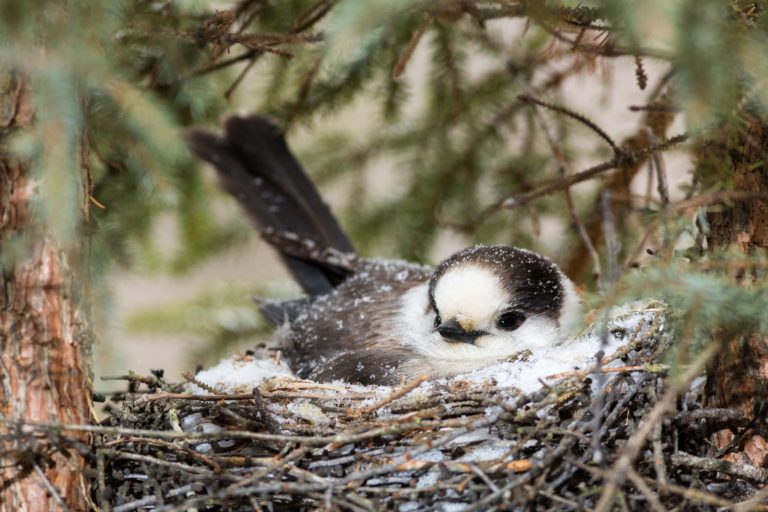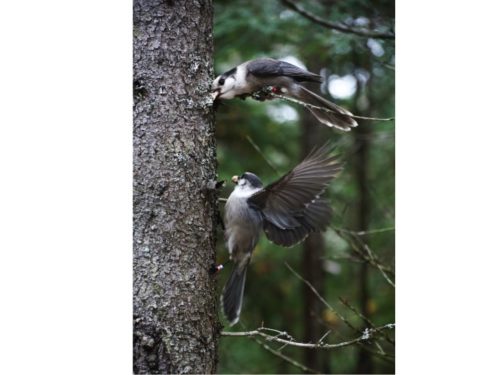
Keep thawing and re-freezing an item from your freezer, and soon it won’t be worth eating.
But if you’re a Canada jay, the consequences of freeze-thaw – more frequent and more unpredictable with climate change – on overwintering food stores may mean lower chances of breeding successfully the following year, according to a new study by University of Guelph biologists.
The research was covered by the Ottawa Citizen.
The study found that freeze-thaw events in autumn are more important than average winter temperature for these iconic birds, and perhaps for other cache feeders whose winter food stores are also threatened by freeze-thaw cycles.
“If their caches degrade, they have less food for use to reproduce,” said lead author Alex Sutton, a PhD student working with Prof. Ryan Norris, Department of Integrative Biology.
Published recently in Royal Society Open Science, the study looked at brood size, nesting success and nestling condition of Canada jays in Ontario’s Algonquin Park.
The provincial preserve marks the southernmost limit of the birds’ breeding range in Ontario. Populations there have fallen by 50 per cent since the 1980s, said Sutton, although the birds range all the way north to the tree line and are thriving across Canada.
Sutton visited the park during four breeding seasons to monitor nesting pairs and their broods. The researchers also used data about nesting Canada jays and historical temperature and freeze-thaw events recorded in the park since 1977.
Canada jays hide food – meat, berries and other perishable items — in tree crevices and under bark. They may live up to 18 years and breed with the same partner for life.
A non-migratory species, they overwinter in home territory across Canada and produce up to four or five young each February.

After more autumn freeze-thaw events, the researchers found, the following year’s brood was on average smaller and contained lighter birds.
Norris said that if a female’s food cache is smaller or degraded, she may have to devote more resources to finding food than raising young.
He likened the effects of those autumn events to repeatedly thawing and refreezing a food item from your freezer, perhaps through having your refrigerator go on and off more than once.
“The fridge for the jays is the tree, and the plug is the environment,” said Norris, who also worked on the study with integrative biology professor Amy Newman and PhD student Nikole Freeman, as well as Dan Strickland, former chief park naturalist at Algonquin. “Weather and climate events are becoming more severe.”
Referring to jays and other creatures such as wolverines living at the southernmost edge of their ranges, he added, “That can have a huge impact on animals not producing a lot of young every year.”
One low brood year can have knock-on effects in subsequent years for the entire population, he added. “To rebound from a bad year is difficult to do. This is another story in a long list of stories about how climate change is influencing wild animals.”
Contact:
Alex Sutton
asutto01@uoguelph.ca
Prof. Ryan Norris
rnorris@uoguelph.ca